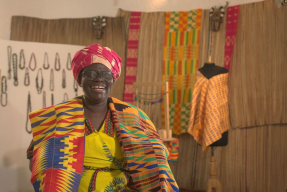Julie Shea, KF12
I can’t recall a time in my life that I felt something was unattainable because I am female. I would by no means argue that women in the United States and Denmark (the two countries I call home) have achieved complete equality, but nonetheless, I have never considered myself a feminist. As I learn about the historical status of women in Peru, I’m beginning to realize that my former resistance to feminist thoughts and movements is frankly a bit ignorant.
Despite the criminalization of discrimination in 2000, women in Peru still face discrimination in the form of widespread domestic abuse, weak or nonexistent reproductive rights, and exclusion from academics, as well as from the formal economy.
CrediMujer, the microfinance institution (MFI) I’m working with here in Peru, lends exclusively to women, acknowledging that financial independence is crucial to women’s equality. CrediMujer is part of a larger organization called Manuela Ramos, which offers much more than microloans. In fact, the organization was established in 1978 with the goal of promoting women in Peruvian society, and later expanded to address problems such as domestic violence, women’s health, and gender equality. Not until 1992 did Manuela Ramos launch CrediMujer, its microfinance program. Manuela Ramos recognizes credit as a tool for development and an effective mechanism in the fight against poverty and inequality, as well as against the pattern of scarcity of resources excluding women to a greater degree than men.

One of many inspirational posters decorating the walls of Manuela Ramos, Puno. “If we want it and are taught, woman can also (do the following things)"
The organization’s solid foundation on principles of gender equality pervades their lending model. Each Community Bank meeting commences with a workshop dealing with a particular topic within financial education (and sometimes other topics such as health, equality, etc.). It is just as important that the female bank members learn how to manage their money and their business, as it is that they have access to capital. Moreover, the women are encouraged to discuss business tips with one another, as well as giving feedback to the loan officers regarding what topics they want covered. At this point in my fellowship, I have interviewed approximately 45 women, and one question I always ask them is what they enjoy most about being a member of their community bank and lending from Manuela Ramos. Most of the women with whom I have spoken express gratitude for the training workshops, explaining that they really learn useful lessons about how to manage their finances.

“Managing the money of your business: how to prevent your business from losing money”. By using hypothetical characters and situations, as well as colorful illustrations, one of the loan officers at Manuela Ramos provides basic tips for how her bank members can prevent losing revenues in their business.
There is of course still debate about the extent to which microfinance is an effective tool for combating gender inequalities (and there is no doubt variance from region to region). And admittedly, I have no way of knowing what is really going on in the homes of these women. Whether or not they are truly in control of their own financial matters I am not able to judge. But based on what I see and what I hear from the bank members, I do believe that these women’s involvement with Manuela Ramos is allowing them to take the first steps on a path towards financial independence.
Please support the female entrepreneurs of Manuela Ramos by joining the Lending Team.
Read more about Manuela Ramos/CrediMujer.
Julie Shea is a Kiva Fellow currently working with Manuela Ramos/CrediMujer in Peru. She is enjoying getting to witness the realities of microfinance on the ground, after having followed the discourse within the field from afar.














